Best Cordless Rear Handle Circular Saws
Cordless Rear Handle Circular Saw Head-to-Head 2022
What is the advantage of a rear handle circular saw? One of them is the extended reach you get, which is extremely helpful when cross-cutting sheet goods or long rips on framing lumber, the other is power.
This Head-to-Head is the third and final in-depth review on cordless circular saws we have published this past month. Our Best 7-1/4” Circular Saw Head to Head, Best 6-1/2” Circular Saw Head to Head, and now this, the Best Rear Handle Circular Saw.
The Tool Box Buzz Crew recently examined six saws, from five major brands of cordless, rear handle, 7-1/4″ circular saws. The saws ranged from 18V to 60V, and single and double battery packs in our testing. We devised a series of tests to determine which was the “Best Cordless Rear Handle Circular Saw.” Crew favorites will be highlighted, best in class categories will be named, endurance testing results will be revealed, and the crew’s coveted best overall rear circular saw will be named!
Cordless Rear Handle Circular Saw Specifications
Here is the list of specifications for all the Cordless Rear Handle 7-1/4″ Circular Saws the Tool Box Buzz Pro team tested in this Head-to-Head:
DEWALT – Model: DCS577B
- Volts: 60V
- No Load Speed: 5,800 RPMS
- Max Cut Depth at 90°: 2-7/16″
- Max Cut Depth at 45°: 1-7/8″
- Bevel Capacity: 53°
- Weight: 12.7 LBS
- Bare Tool Price: $249.00
- Mfg Link: DEWALT DCS577B
Flex – Model: FX2141R
- Volts: 24V
- No Load Speed: 6,200 RPMS
- Max Cut Depth at 90°: 2-5/8″
- Max Cut Depth at 45°: 1-7/8″
- Bevel Capacity: 53°
- Weight: 9.63 LBS
- Bare Tool Price: $249.00
- Mfg Link: Flex FX2141R
Makita – Model: XSR01PT
- Volts: 36V (2- 18V)
- No Load Speed: 5,100 RPMS
- Max Cut Depth at 90°: 2-9/16″
- Max Cut Depth at 45°: 1-3/4″
- Bevel Capacity: 53°
- Weight: 12.4 LBS
- Bare Tool Price: $209.00
- Mfg Link: Makita XSR01PT
Makita – Model: GSR01M1
- Volts: 40V
- No Load Speed: 6,400 RPMS
- Max Cut Depth at 90°: 2-9/16″
- Max Cut Depth at 45°: 1-3/4″
- Bevel Capacity: 53°
- Weight: 11.7 LBS
- Bare Tool Price: $249.00
- Mfg Link: Makita GSR01M1
Metabo HPT – Model: C3607DW
- Volts: 18V
- No Load Speed: 5,100 RPM
- Max Cut Depth at 90°: 2-7/16″
- Max Cut Depth at 45°: 1-3/4″
- Bevel Capacity: 53°
- Weight: 8.2 LBS
- Bare Tool Price: $199.00
- Mfg Link: Metabo HPT C3607DW
Milwaukee – Model: 2830-20
- Volts: 18V
- No Load Speed: 5,800 RPMS
- Max Cut Depth at 90°: 2-1/2″
- Max Cut Depth at 45°: 1-7/8″
- Bevel Capacity: 53°
- Weight: 10.0 LBS
- Bare Tool Price: $269.00
- Mfg Link: Milwaukee 2830
Cordless Rear Handle Circular Saw Testing Format
For our Best Cordless Rear Handle Circular Saw review, our team looked at a total of seven criteria, which are listed below. Each of the criteria was ranked independently, and the “Overall Best Cordless Rear Handle” was determined using some of the combined test results.
- Accuracy / Line of Sight – The accuracy and line of sight of the saws was compared including the ability to follow a cut line.
- Performance [Power / Speed Test]– We looked at cutting speed through 2-layers of plywood as an indicator of saw motor performance.
- Features – An overall comparison of features and specifications.
- Weight – We measured bare tool only – no battery.
- Noise – We used a decibel meter used to measure the tool under no-load cutting load conditions.
- Price– When deciding which saw is best for a user, price is always a consideration. For each of the saws “as-tested,” we’ve given the current bare tool pricing discovered online at the time of writing.
- Best Value – This category winner often resonates with most people because it performs well in tests while still being cost-effective.
Milwaukee Saw Blades – Model 48-40-0726
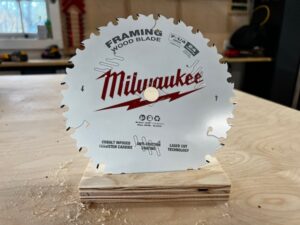
Prior to testing, all circular saws were fitted with task-specific, brand new 24 tooth, 7’1/4″ Milwaukee blades, model 48-40-0720. The focus shifted away from the blades and toward the tools as a result. The use of uniform blades throughout the testing helped to preserve uniformity by removing an external testing variable.
The staff like Milwaukee blades because they cut exceptionally well.
For wood cutting applications, Milwaukee circular saw blades deliver extended life, increased precision, and cooler cuts. Milwaukee manufactures application-specific Cobalt Infused Tungsten Carbide blades that extend blade life and maintain tip sharpness. Laser Cut Vibration Slots in their blades decrease wobbling and warping.
The blades are protected against corrosion and gumming by an Anti-Friction Coating.
Accuracy Testing / Line of Sight – Winner Flex
For our accuracy test, we asked one experienced user to use every saw to freehand cut plywood and framing lumber, to rank the tools based on their performance. The saws were also checked at their 90° and 45° bevel settings for accuracy. We purposely had a single operator execute this to better control the test standardization. Our assumption was that multiple users might have slightly different techniques, and therefore results, as compared to a single Pro operator. We also tested the accuracy of the scales and slots in the base plate of the saw. If they are sufficiently accurate these scales and notches can be used to line up framing cuts without the need of marking lines before making cuts and can be a tremendous time saver!
For the accuracy category each of the circular saws was ranked on accuracy in the following areas:
- Scale/slot accuracy
- Bevel accuracy when set to 45 degrees.
- Cross-cut accuracy when set to 90 degrees (how perpendicular the cut is to the surface)
Unfortunately, the base plate kerfs on all but the Flex were disappointingly inaccurate. Bevel settings were decent across all saws and certainly accurate enough for most framing out of the box.
| MFG | Model | Accuracy | Rank |
| Flex | FX2141-1D | 3 | 1 |
| Makita | GSR01M1 | 3 | 1 |
| Makita | XSR01PT | 3 | 1 |
| Milwaukee | 2830 | 3 | 1 |
| DEWALT | DCS577X1 | 4 | 2 |
| Metabo HPT | C3607Dw | 4 | 2 |
Performance Testing (Power/Speed) – Winner DEWALT and Flexvolt
Plywood is one of the most used, if not THE most frequent, building materials. We used our Accu-cut jig to evaluate each tool’s cutting speed through two layers of 3/4′′ plywood for our Power/Speed test. For each tool, three runs were completed and the times were averaged.
| Mfgr | Model | Run1 | Run2 | Run3 | Run Ave | Rank |
| DEWALT | DCS577X1 | 10.3 | 10.6 | 10.0 | 10.3 | 1 |
| Makita | XSR01PT | 12.8 | 13.0 | 13.4 | 13.1 | 2 |
| Makita | GSR01M1 | 14.1 | 15.0 | 15.4 | 14.8 | 3 |
| Flex | FX2141-1D | 13.2 | 16.2 | 17.7 | 15.7 | 4 |
| Milwaukee | 2830 | 16.4 | 15.7 | 15.9 | 16.0 | 5 |
| Metabo HPT | C3607Dw | 19.5 | 22.0 | 21.0 | 20.8 | 6 |
The FLEX cut smooth, tracked well, was super powerful, and had good sight lines. ~ Rob Robillard
The fastest saw was the DEWALT DCS577B Flexvolt, cutting at an impressive time of 10.3 seconds.
There was just about a 3-second gap to the second-place winner of the Makita 36v saw at 13.1 seconds and the third-place winner was the Makita 40v rear handle at 14.8 seconds.
A standout for me was the Makita 40V, it cuts fast and smooth, the DEWALT was a cutting beast, and its hard NOT to notice the lightweight Metabo HPT. ~ Jeremy Kassel
Weighted Pulley System
The pulling force was provided by a weighted pulley system which pulled the circular saw through the material with consistent force. This approach has 2 main benefits:
- First, it allows a constant force to be applied to each saw in the same way that an operator tries to apply a constant force while cutting.
- Secondly, by allowing for natural resistance (as opposed to forcing a constant cutting speed via mechanical motors) it allows the saw to attempt to cut at its natural maximum speed based on the maximum RPMs of the motor. This also underscores the importance of using the same blade types on all of the saws.
The KREG sled fixture held the circular saws securely and level while the aluminum tracks kept the saw moving in a consistent and parallel fashion. The saws were in contact with the sled and the sled was in contact with the workpiece. During the course of testing, the fixture was performed with no issues. An automatic timer with contact switches was used to start and stop the timer for each test. Removing the human error element of a handheld stopwatch.
All the tools selected for this test were members of the 18V-60V high-performance line supplied by each manufacturer. Batteries used all fell in between 120 – 180 Watt-Hour capacity.
With many manufacturers electing to up the Voltage on their flagship lines like DEWALT’s 60V Flexvolt, Makita’s 40V XGT, and MetaboHPTs 36V Multivolt system, it is extremely limiting to narrow a field of competition down to a specific Voltage range. Tool companies are all experimenting with different voltage ranges, busbar materials, internal electronics, and battery configurations to try to maximize the energy transfer from their battery systems to the tool’s ultimate performance output. Each tool is a complex system with a lot of variables. The only thing we at Tool Box Buzz attempt to quantify is a measurement of the tool’s ultimate performance and in this case that was the speed of cut.
One piece of information and a variable we can control is the relative battery size across the competition. To compare one manufacturer’s battery capacity to another, the Voltage and the Amp Hour rating need to be considered. Multiplied together, you get a Watt-Hour capacity of the battery. Below is a table of the saws in their tested configuration. We found no correlation between Watt Hour and Performance, in fact, the DEWALT as tested had the lowest Wh battery at 120.
| MFG | Model | Voltage | Amp Hour | Watt Hour |
| DEWALT | DCS577X1 | 60 | 2 | 120 |
| Flex | FX2141-1D | 24 | 6 | 144 |
| Makita | GSR01M1 | 40 | 4 | 160 |
| Makita | XSR01PT | 36 | 5 | 180 |
| Metabo HPT | C3607Dw | 36 | 4 | 144 |
| Milwaukee | 2830 | 18 | 8 | 144 |
The DEWALT power is amazing, if I’m reaching for a rear handle saw, it’s because I want power! ~ Ethan Bickford
Best Rear handle Cordless Circular Saw Features – Winner Makita 40 V
Trying to compare tool features from different brands is never easy, but the truth is in the specifics, thus a feature assessment is necessary. All of these saws had solid, adjustable rafter hooks.
On a scale of one to five, the entire team used all of the tools in a variety of cutting scenarios including ripping LVL, cutting stringers, and beveling and ripping 2x stock, to test to rate the features on these saws. [The best score is 1]
| Mfgr | Model | Blade Change | Bevel Grade | Depth Grade | Trigger Grade | Totals | Rank |
| Makita | GSR01M1 | 1 | 1 | 1 | 1 | 4 | 1 |
| Makita | XSR01PT | 1 | 1 | 1 | 1 | 4 | 1 |
| DEWALT | DCS577X1 | 2 | 2 | 5 | 2 | 11 | 2 |
| Flex | FX2141-1D | 3 | 4 | 4 | 3 | 14 | 3 |
| Milwaukee | 2830 | 4 | 3 | 3 | 5 | 15 | 4 |
| Metabo HPT | C3607Dw | 5 | 5 | 2 | 4 | 16 | 5 |
Features that we looked at
- Blade Change | Spindle Lock
- Bevel
- Blade Depth
- Trigger | Grip
- Electric Brake
- Site line / Scale
- Rafter hook [not ranked]
Best Blade Change – Makita 40v
To ensure a quality cut and productivity on the job site, use a new and appropriate blade for your application. Blade replacement should be simple, safe, and convenient. We swapped out the blades on 5 saws, and while there were no clear standouts, a few major distinctions emerged during our tests, allowing us to determine the best-in-class winners.
The 40v Makita has super easy to push and engages the spindle lock. The 40V Makita blade locked faster than any of the other saws and has more detents on the arbor lock, resulting in less spinning of the blade to lock the spindle. The DEWALT was a close second.
The Flex saw took third because the team all felt that the dust chute hindered accessing the spindle lock button. Once you get to the spindle lock, it has a solid, smooth feel to it, with plenty of detents.
Milwaukee’s plastic spindle lock feels cheap and has a lot of slop, but did have a decent amount of detents on the blade lock.
The Metabo HPT earned 5 scores because they do not have an onboard wrench. Every saw manufacturer should be able to figure that out. The Metabo HPT had the easiest to actuate spindle lock, with a ton of detents, but because no onboard wrench, it automatically placed it at the bottom.
Best Bevel – Both Makita Saws
A rear handle saw is very rarely, if ever, used for finish applications. It’s best to make your money cuts on the miter saw or a track saw. As a result, the best applications for beveling are rough framing tasks, where speed is key. The major performance indicator for this category is a bevel scale that allows users to rapidly select and check common bevel values.
The Flex saw allows for a 56-degree bevel but the “bevel-action” stinks and the base plate movement is “wicked” stiff. The base plate pivots on a pivoting rivet style connection and may loosen with time. Flex uses a selector switch to allow detent at 22.5, 45, and 56-degrees.
The rest of the saws will bevel to 53-degrees. The DEWALT has a smooth lever action with “ball-detents,” at 22.5, 45, and 53-degrees. While this saw was tight, our experience in the field is that this ball-detent gets sloppy over time.
The Makita saws have a positive bevel selector at 22.5,45 and 53-degrees. We found that the 40-volt saw was easier to adjust and was smoother than the 36-volt saw.
The MAKITA has an outstanding bevel selection, the knob [switch] is fantastic. It has good sight lines and an interesting dust port. ~ Ethan Bickford
The Milwaukee has no stops and has a best nice scale, that is sharp and easy to read. The action on the saws bevel was the smoothest, but you have to hunt for 45- degrees. It would be nice to have a detent.
The Milwaukee is powerful but it has no redeeming features, it’d be a better saw if they could lessen the weight and speed up the cut. ~ Jeremy Kassel
Metabo HPT has a rudimentary scale, and you have to shift the bevel lever to get to 53-degrees. the team felt that the action and adjustment on this saw was a “sloppy mess.”
Best Blade Depth Adjustment – Both Makitas
Our team agreed that establishing the depth should be done on the workpiece by checking where the blade goes past the material to be cut. Still, there’s much to be said about a gauge that can set the depth of the saw fast and accurately.
Makita has a really nice action, coupled with a large non-slip, rubberized lever with no sharp edges.
Metabo HTP does not have a paddle lever instead opted to go with an inline, rounded, or pointed lever. There is no arrow on the depth scale and the depth setting was not intuitive. We feel that like any tool most users will get used to it, and accommodate it.
Milwaukee has a large paddle-style lever.
The Flex lever had more friction than we felt it should have. The scale does not have an arrow, was also not easy to read, and was not intuitive. Although we all agreed that no one really looks at the scale. The Flex does offer the deepest cut at 90° at 2-5/8″
The DEWALT has a paddle lever that actuates well, it is a longer lever, allowing the user leverage. One weird detail is that the lever is flipped the opposite way as the other saws. Had the orientation of the lever been reversed, we feel the lever would be easier to actuate.
Best Trigger | Grip – Both Makitas
The best two saws went to the two Makita saws. They had a comfortable switch that was easy to depress and hold with no hot spots.
The most comfortable grip was the DEWALT and Flex saws. The DEWALT has a pinch-point at the bottom of its trigger and if you are in the habit of gripping the saw low – you’ll be sure to find it.
The Flex had a nicely shaped, rounded over trigger profile – resulting in no hot spots. One feature on the Flex that annoyed some of the crew was that the trigger does not depress [recess] all the way into the grip handle, like the other saws. Many on the team found that annoying and uncomfortable with longer use.
Milwaukee has a squared-off trigger with sharp edges which was prone to hot spots which necessitated re-gripping.
As far as the grips went, the team felt they were all comfortable and there was nothing to note other than the Flex has an aggressive grip material that could become uncomfortable with long-term usage.
Best Site Lines
Sight-Line / Base Plate Scale Winner – Milwaukee
No matter how well a tool feels in your hand or how long the runtime is, if you can’t see what you’re doing, you can’t expect great performance. At a minimum, you’ll probably be pulling your hair out when getting ready to make a critical cut.
Nothing will kill your productivity and confidence like swapping from sightline to sightline to see if you can actually watch the blade through your line. At worst you’ll have to deal with subpar cuts that you can’t redo, which for a lot of us, is tough to live with. So in this category, we focus on how well users can see the blade during operation from both the blade and motor side.
The Milwaukee won best site lines due to its low profile guard and clear view of the blade. The Makita XGT and Flex saws came in last because of the dust ports placed on the motor side of the guard just in front of the auxiliary handle. And the other saws were all fairly similar with a larger guard and slightly less of a clear view of the blade, especially from the motor side.
Other Stand Out Features
There were a few stand-out features that we wanted to share with you. The Makita 36 V saw is the only saw with an on-tool battery gauge, it was easy to see and use, however, the rafter hook does block access to the batteries.
The Metabo HPT saw can also run off an adapter allowing you to plug the saw in to get those few more cuts at the end of the day or to keep you constantly going throughout the day with zero downtime waiting for a battery to charge. Additionally, it has a 2-7/16″ depth of cut.
The rafter hooks on these saws all varied from a large open hook to a stepped-out style. All of the hooks opened easily and were fairly durable. The rafter hook hinge socket on the Flex, Metabo HPT, Milwaukee, and DEWALT are plastic ABS or reinforced nylon material. The Makita saw is built with metal.
Overall the Makita has the nicest design, and a smooth blade guard, it’s a comfortable saw to use with solid, well-designed features and finishes,
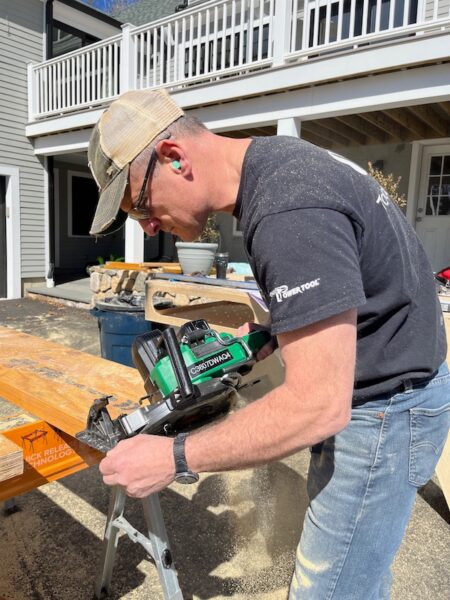
Weight – Winner Metabo HPT
The rear handle saw is a heavy tool. It is one of the heaviest cordless tools you will use on the job site. The lightest rear handle saw we tested was the Metabo HPT which weighed 8.6lbs with no battery. The second was the Makita 36v (also no batteries) weighing in at 10.1 lbs. The heaviest saw in the mix was the DEWALT Flexvolt weighing in at 11.05lbs
| Mfgr | Model | Weight (lb) | Rank |
| Metabo HPT | C3607Dw | 8.6 | 1 |
| Makita | XSR01PT | 10.1 | 2 |
| Makita | GSR01M1 | 10.1 | 3 |
| Flex | FX2141-1D | 10.2 | 4 |
| Milwaukee | 2830 | 10.3 | 5 |
| DEWALT | DCS577X1 | 11.05 | 6 |
I really liked the compact design, and lighter weight on the Metabo HPT, it has a great line of sight and it still “packs a punch” when ripping LVL or cutting stringers. ~ Scott Arnold
Noise – Winner Makita 36V
| Mfgr | Model | Noise | Rank |
| Makita | XSR01PT | 97.8 | 1 |
| Metabo HPT | C3607Dw | 98.9 | 2 |
| Flex | FX2141-1D | 99.2 | 3 |
| Makita | GSR01M1 | 99.8 | 4 |
| Milwaukee | 2830 | 101.1 | 5 |
| DEWALT | DCS577X1 | 103.5 | 6 |
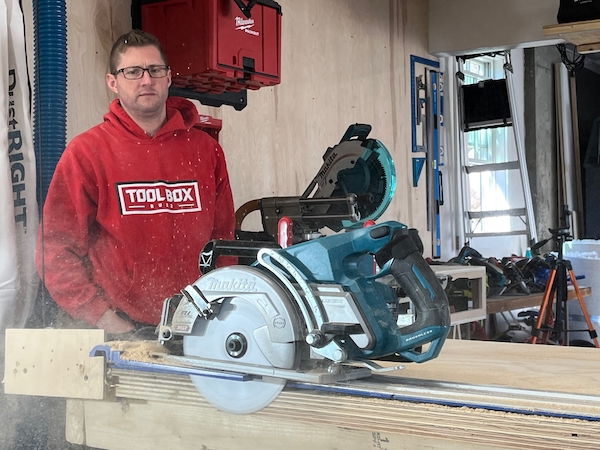
For noise levels up to 90 decibels, OSHA allows 8 hours of exposure, but once the decibels reach 95 and higher than exposure time limit drops rapidly. All of these saws require hearing protection.
The quietest saw of these rear handles was the Makita 36V at 97.8 decibels under no-load conditions. Second place was the Metabo HPT at 98.9 decibels and the loudest saw was the DEWALT coming in at a noisy 103.5 decibels
Price – Winner Metabo HPT
| Mfgr | Model | Bare Tool Price | Rank |
| Metabo HPT | C3607Dw | $199 | 1 |
| Makita | XSR01PT | $209 | 2 |
| DEWALT | DCS577X1 | $249 | 3 |
| Flex | FX2141-1D | $249 | 3 |
| Makita | GSR01M1 | $249 | 3 |
| Milwaukee | 2830 | $269 | 6 |
The cost of a tool can sometimes dictate whether or not it is purchased. We can all agree that price is a significant factor when purchasing tools, especially for those of you who are new to the trades. We also recognize that most contractors are brand loyalists who would rather continue with their present battery platform than develop a new cordless tool line.
We used bare tool price to compare these tools, at the time of this testing. All of these rear handle saws can be purchased at your big box store or over ACME Tools.
The least expensive saw was the Metabo HPT priced at $199.00, followed by the Makita 36V at $233.00. The most expensive saw on the market at the time of this article was the Milwaukee M18 coming in at $269.00
Overall Best in Class Rear Handle Cordless Circular Saw – WINNER Makita 36V
| Mfgr | Model | Performance | Weight | Accuracy | Features | Totals | Rank |
| Makita | XSR01PT | 2 | 2 | 1 | 1 | 6 | 1 |
| Makita | GSR01M1 | 3 | 3 | 1 | 1 | 8 | 2 |
| DEWALT | DCS577X1 | 1 | 6 | 2 | 2 | 11 | 3 |
| Flex | FX2141-1D | 4 | 4 | 1 | 3 | 12 | 4 |
| Metabo HPT | C3607Dw | 6 | 1 | 2 | 5 | 14 | 5 |
| Milwaukee | 2830 | 5 | 5 | 1 | 4 | 15 | 6 |
We evaluate all areas when naming the overall best-in-class saw, with accuracy, performance, design, and value leading the way. Finally, we choose a tool that excels at its primary role, provides high-quality features that improve performance, and does so at a reasonable cost.
Intangibles frequently play a role in a tie-breaker in any one area, but because the overall best in class is a composite of so many individual judgments, our decisions are usually pretty objective given the head-to-head results.
The Makita 36 v saw scored 7 total points coming in tops in Accuracy and second in the rest of the categories; performance, weight, and features. The Makita 40 v saw scored 8-points taking second place coming in first in Accuracy and features and third place in performance and weight.
Third place went to the DEWALT saw with 12-points, with a crushing performance in our power/speed testing, se3coond place in inaccuracy, and third in features.
Best Value Rear Handle Circular Saw WINNER Makita 36V
This category winner often resonates with most people because it performs well in tests while still being cost-effective. The Makita 36V saw is the best valued saw it was the least expensive saw [bare tool] at $209.oo and came in first place in this Head-to-Head testing
Conclusion
At the end of the day, the decision to go to a cordless rear handle circular saw is a personal one or driven by your field cutting needs. Someone considering a rear-handled saw may be influenced by the battery platform they are currently invested in. We recognize that as an investment and money-saving decision.
We strive to provide you with the MOST COMPREHENSIVE facts available. In order to give you the most thorough data possible, our ALL-Pro contractor team committed a substantial amount of time and effort to give you the Best 7-1/4″ Rear Handle Circular Saw Head-to-Head analysis.
These tests and evaluations are difficult, time-consuming, and ultimately limited in coverage because we are not a professional testing organization with limited time to evaluate the equipment. We can’t test these saws for long periods of time to assess their durability, and we can’t possibly test every possible use.
Many people have inquired about how we arrive at our final rankings. Comparing tools can be done in a variety of ways, as previously mentioned. The good news is that we’ve made ALL of our test data public, and you can grade the tools any way you’d like. Don’t agree with a ranking? No worries. Simply remove it from the matrix and reorder them. We hope you’ll find this Head-to-Head comparison useful when comparing cordless rear handle circular saws.
If you have a moment, please check out our other Head-to-Head Tests.
Buy Now From Our Sponsored Retailers
Other Options
Best Rear Handle Circular Saw | Video Review
About the author
1 Comment
Leave a comment
Disclosure
Product reviews on this site contain our opinion of a product or service. We will always strive for objectivity and transparency in our reviews. Our goal is to provide readers with honest, objective information based on our own experiences. We never have and never will accept payment in exchange for a positive review. Many of the products that we review are provided to us for free by a manufacturer or retailer. In some cases, we also have advertising or affiliate relationships with manufacturers and retailers of products and services we review. For additional information please visit our additional disclosure policies.











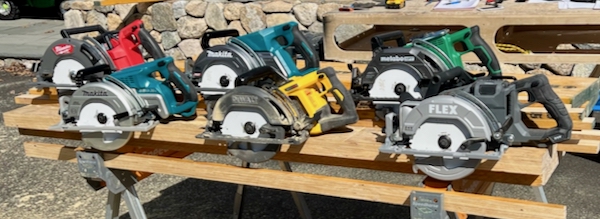
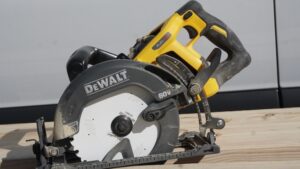
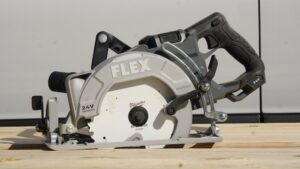
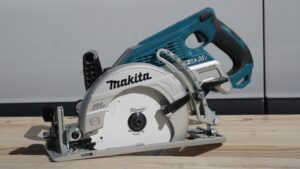
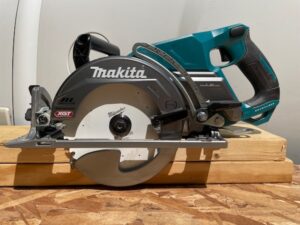
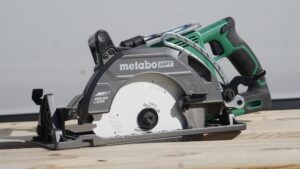
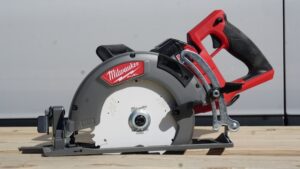
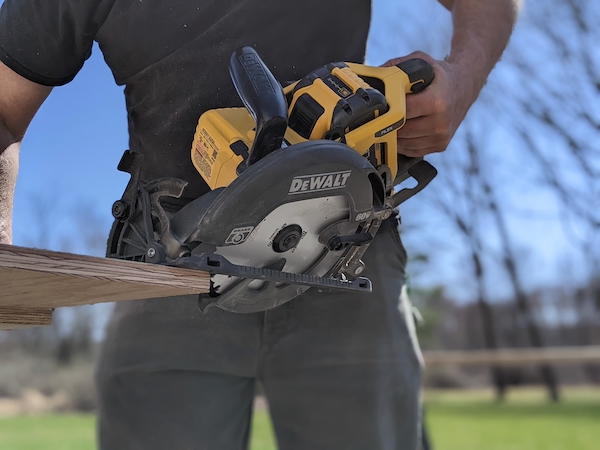
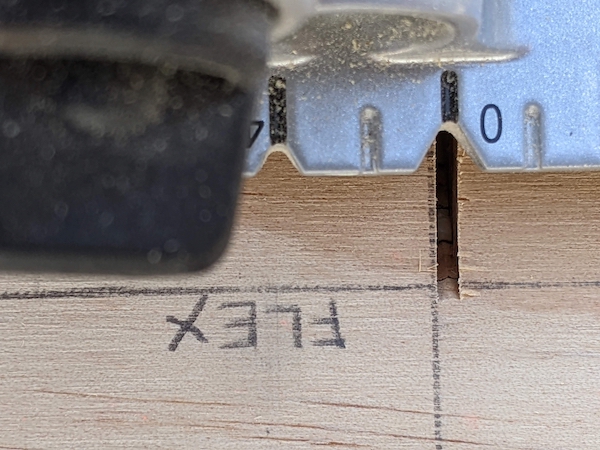
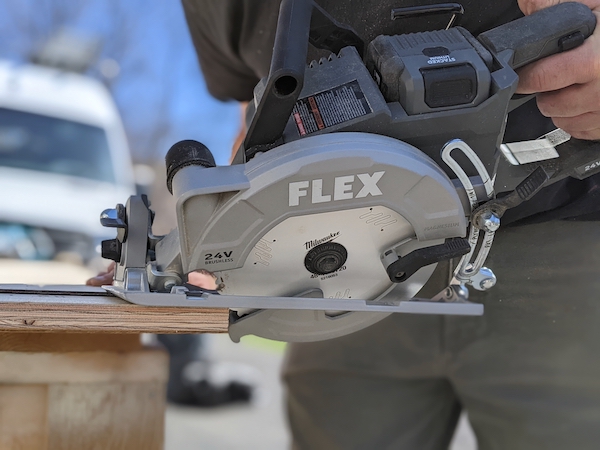
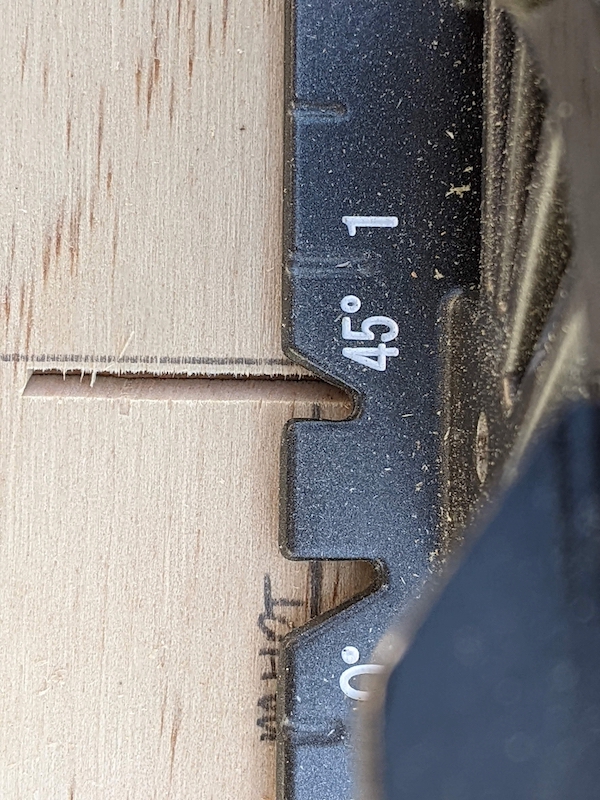
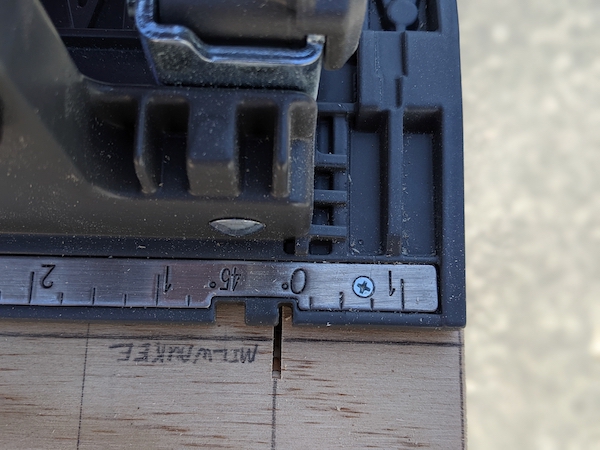
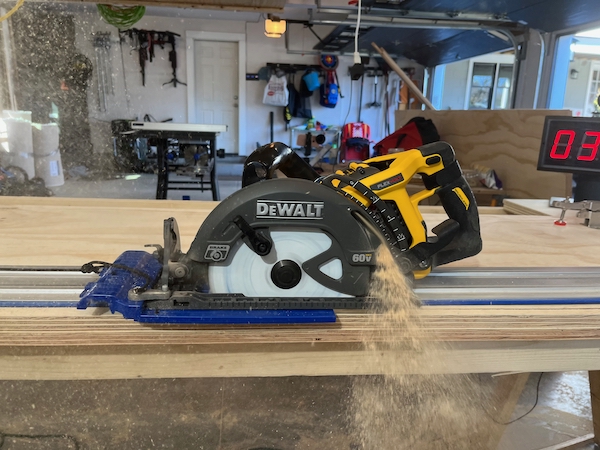
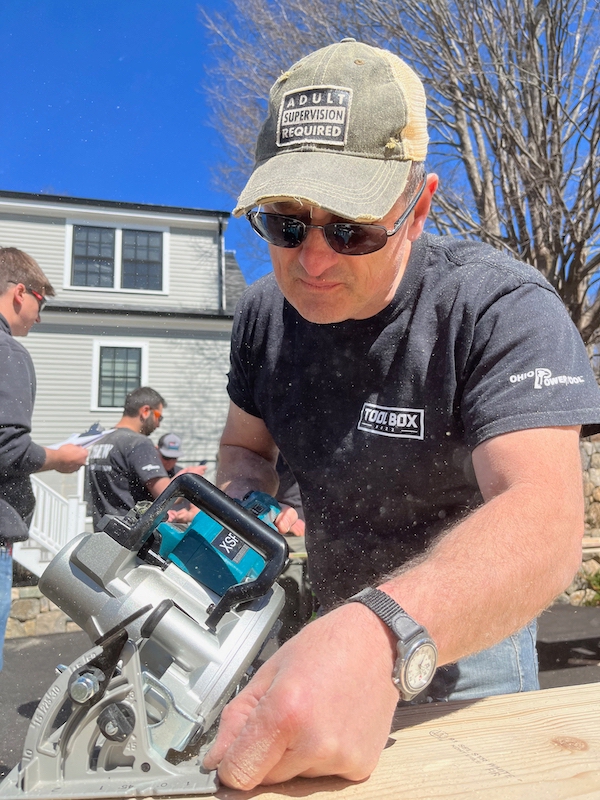
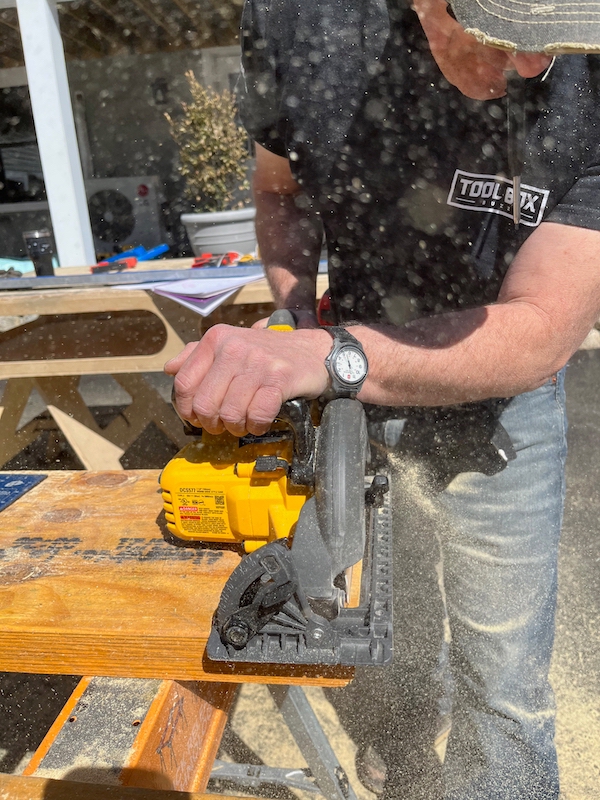
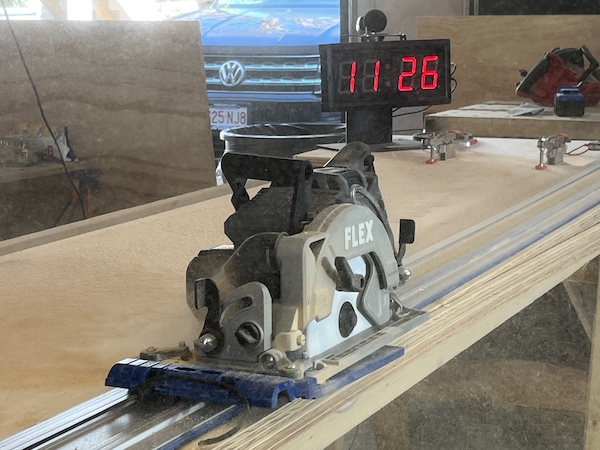
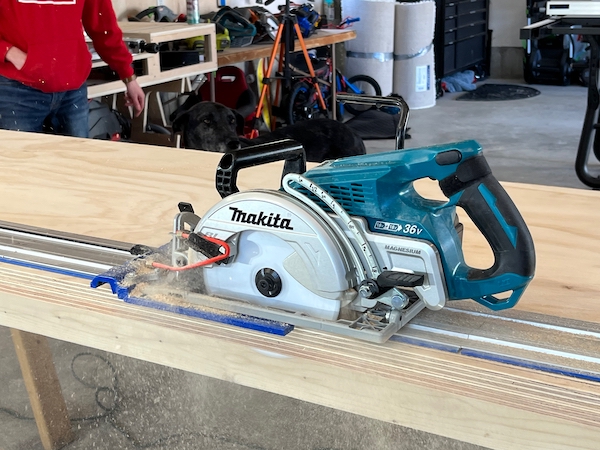
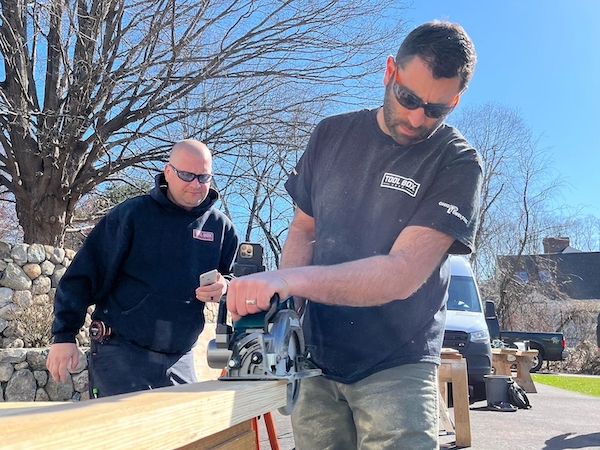
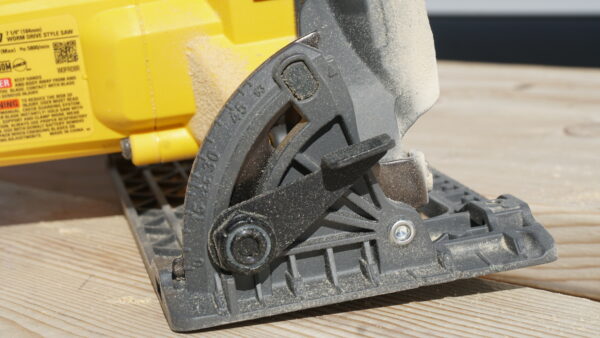
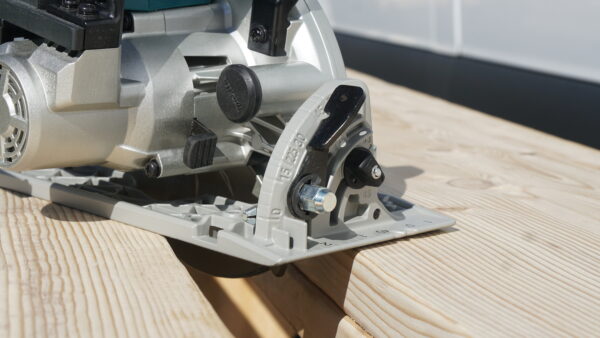
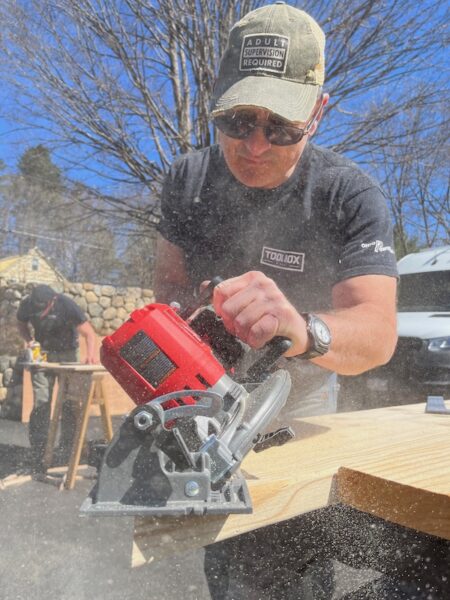
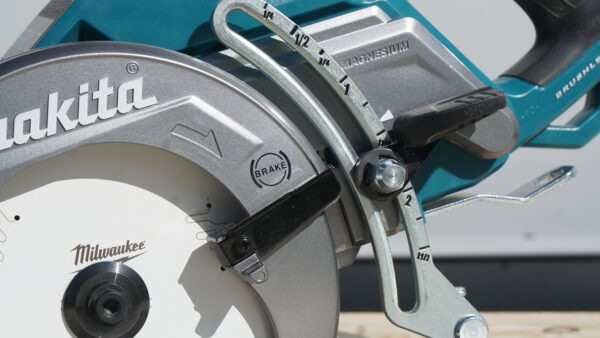
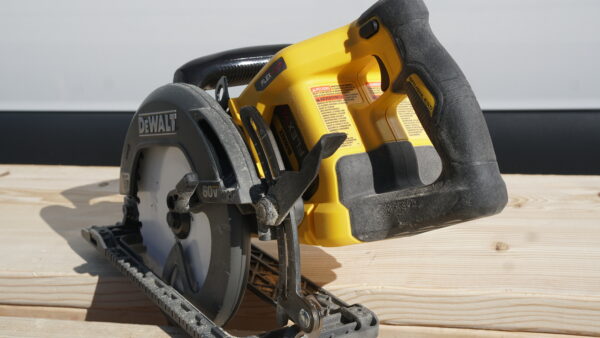
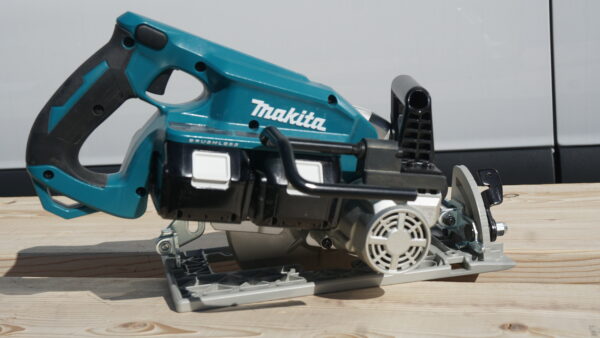
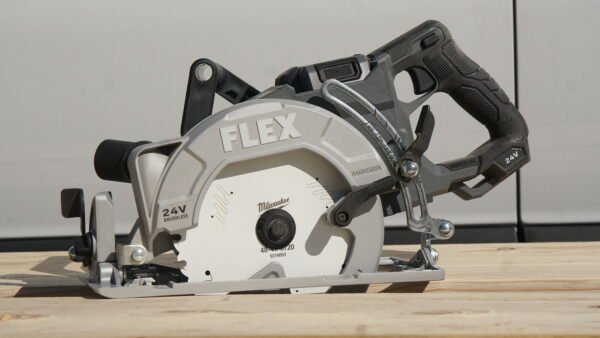
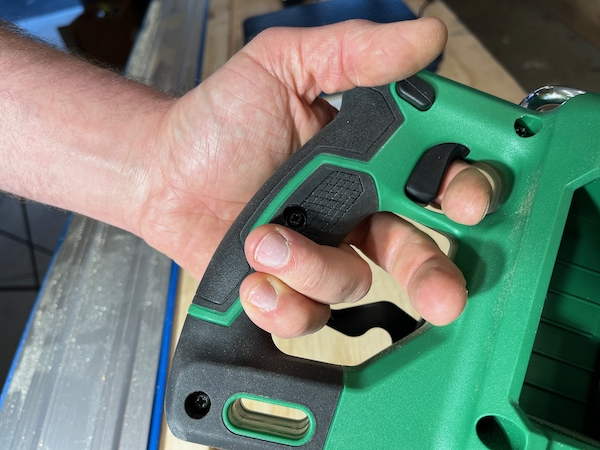
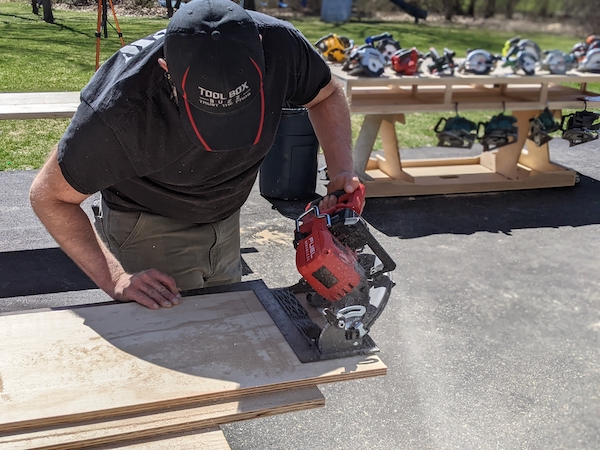
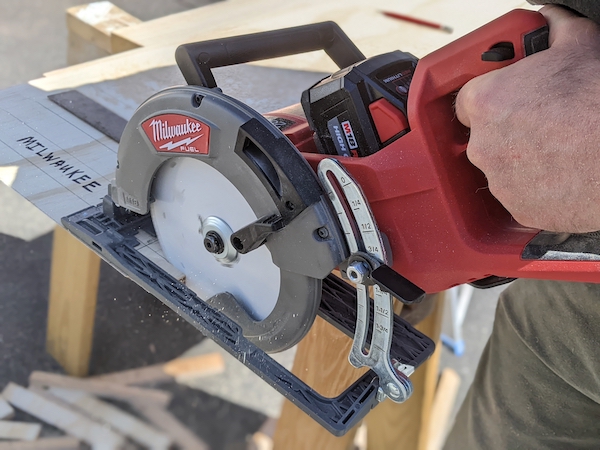
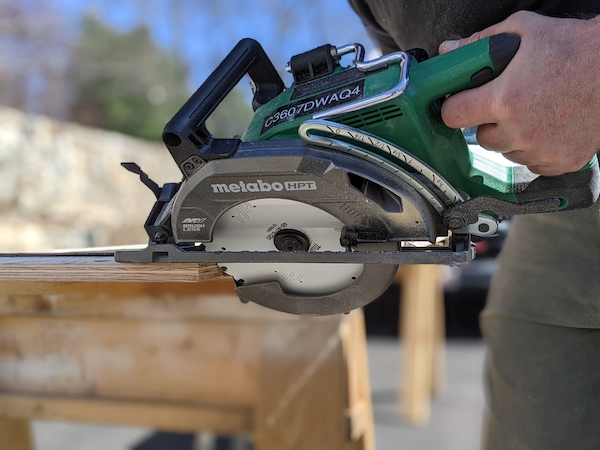
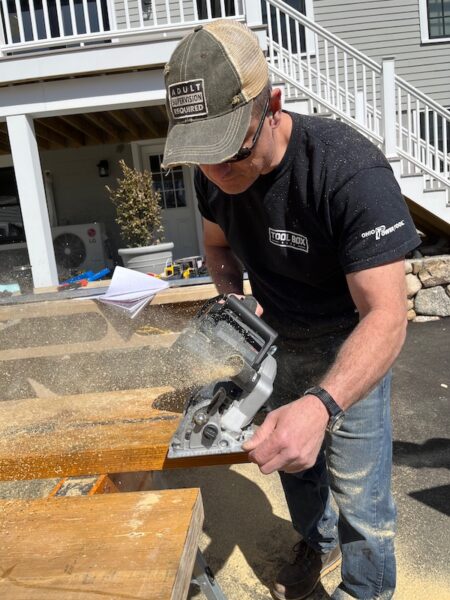
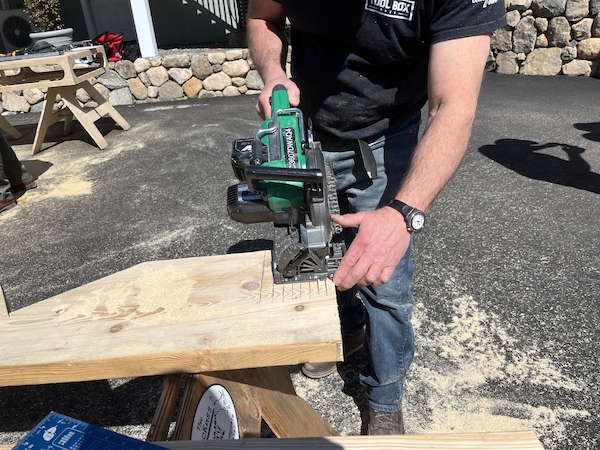
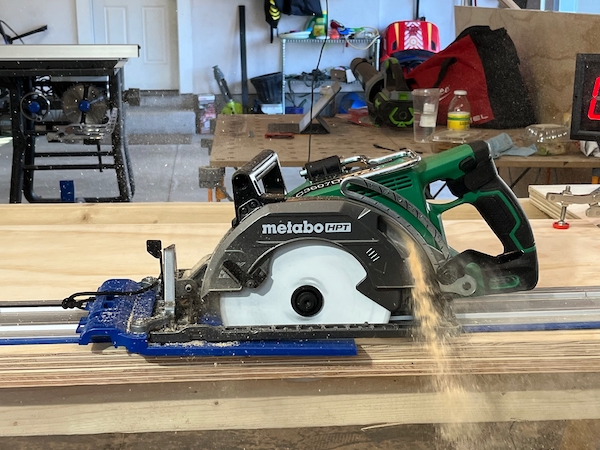
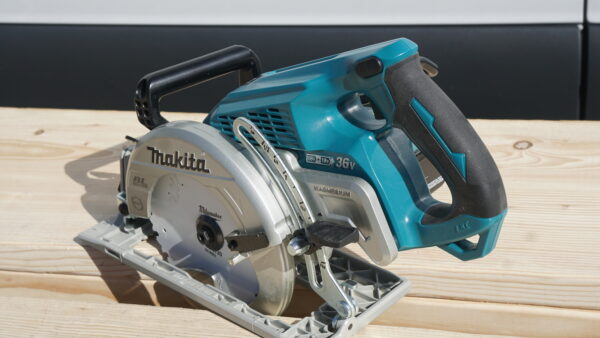
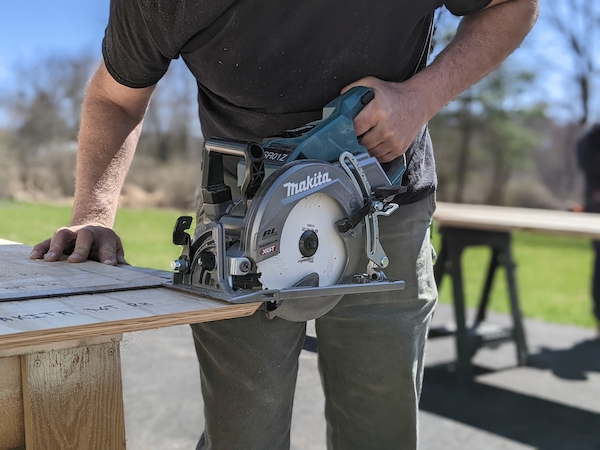
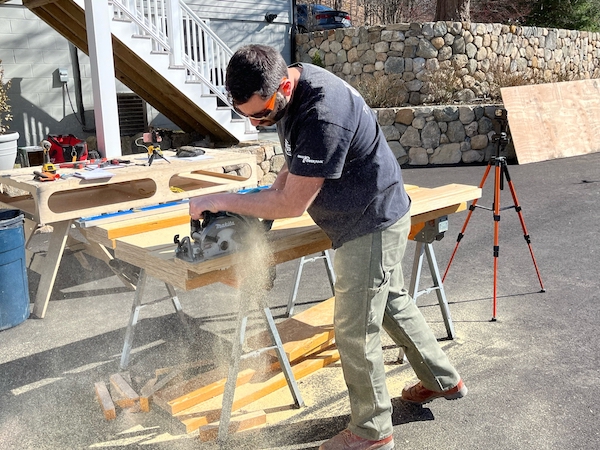
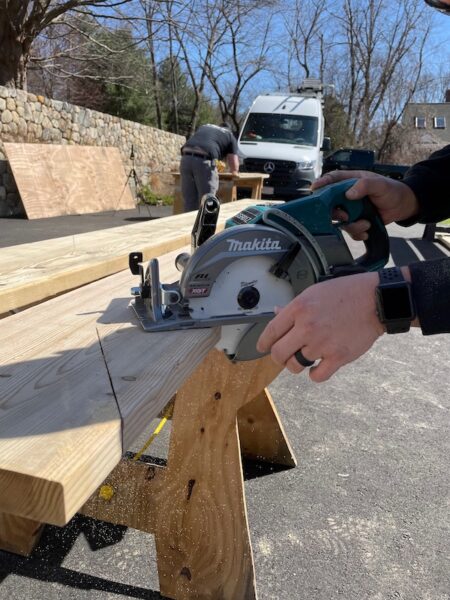

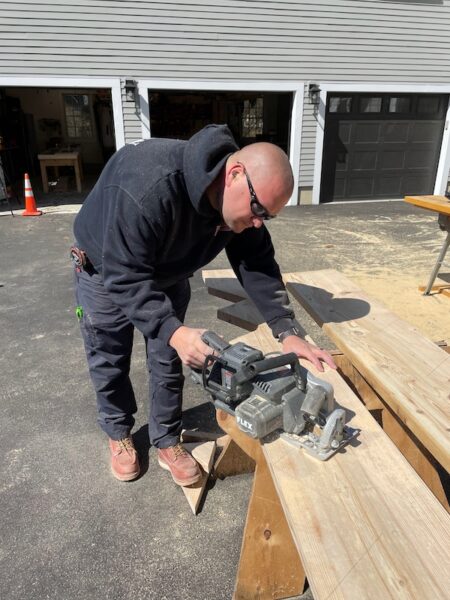
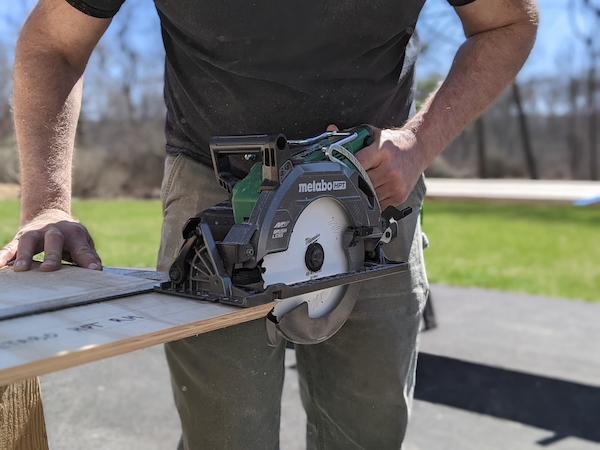
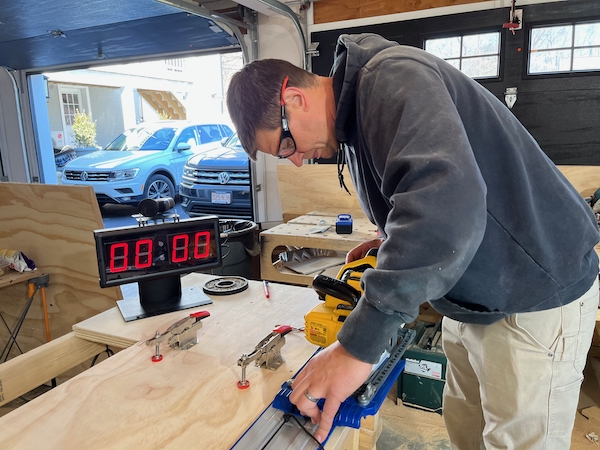












Great review. I have the 6 1/2 track saw,6 1/2, 7 1/4, 9 1/4 sidewinder.
The 7 1/4 and 9 1/4 have track capable bases.
7 1/2 and 10 inch miter saws. All cordless.
Makita is kicking ass and taking names. Why can’t they put out a 36V 8 1/4-Inch table saw?